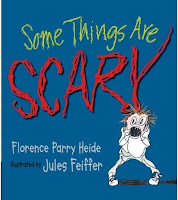Picture Books August 10 for 10
My own list really does change day by day although many of these books are my long time favorites and I end up reading them no matter what grade I'm teaching or what group of teachers I'm working with.

If You're Not From the Prairie By David Bouchard
This is a great mentor text. My students love to write their own books using their own expertise. Awesome images!

Water Hole Waiting By Jane Kurtz This is a story based on an actual water hole in Africa. It is filled with beautiful words and pictures. After we read this story we started to watch africam.com and could observe African animals at their natural water hole. We saw elephants, giraffes, hyenas, hippos, lions, and so much more. It became our favorite thing to do and was a huge hit with families!

How to Heal a Broken Wing By Bob Graham
This is a beautifully simple story that is told as much through illustration as the text. Bob Graham is one of my favorite author/illustrators!

Let's Get a Pup Said Kate By Bob Graham The enthusiasm in this story is contagious! All the kids can relate to the story and you really find your self totally engaged with Kate's family! It's another awesome mentor text.
 Some Things Are Scary By Florence Parry Heide I love the inverted sentences in this book and the things that are scary in this book are definitely scary to children of all ages. It's a great beginning of school book to make connections and build common ground!
Some Things Are Scary By Florence Parry Heide I love the inverted sentences in this book and the things that are scary in this book are definitely scary to children of all ages. It's a great beginning of school book to make connections and build common ground! 
Memoirs of a Goldfish By David Scillian One of my favorite books! The kids and I laugh all the way through it! It is awesome if you have a classroom goldfish.
Surprising Sharks By Nicola Davies This is a literary nonfiction. This is one of the most engaging texts--kids love to find out information about sharks, but this is so much fun!!

A Couple of Boys Have the Best Week Ever By Marla Frazee I really like everything Marla Frazee does. This book we read over and over and never get tired of it. Of course it prompts all kinds of stories from the kids!

A Splendid Friend Indeed By Suzanne Bloom Beautiful story about two friends. Illustrations are so comforting. We send our incoming K's home with this book at K registration and we all have the big books that we read the first week of school. Kids are so excited that they already know the story!
The Granny Man By Judith Schachner This is a wonderful story about an old cat whose body is old and tired that receives an incentive to keep on living! The language in this story describing this old cat is awesome!


